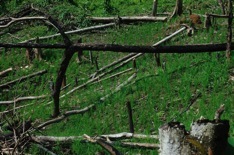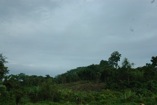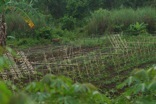
In the older form of economy, Manobos did agriculture, intermittent hunting, and food gathering. The rainforests were a source of a rich diet of rattan and bamboo shoots, mushrooms, edible ferns, river snails, fish, sago, etc. In the forests were swiddens that were multicropped with many varieties of rice (see left photo). These swiddens were left to fallow after two to three years of cultivation. Root crops such as taro, sweet potatoes, yams, sugar cane, and bananas were also planted at the borders of the plot. Swidden agriculture is suited to low population density and semi-nomadism, but with sedentarization and population pressures owing to the influx of Visayan settlers after 1960s, land became a “scarce resource,” even a commodity to be bought and sold individually Since then, corn and “cash crops” like stringbeans and leafy vegetables have been cultivated. When these are ready for harvest, middlemen visit Manobo gardeners and they barter their crops with household necessities like oil, salt, matches, liquor, etc. Today, swiddens are rare and can be found only in the barrios and other hilly parts of the area (as in left photo below). In the right photo below, a garden totally devoted to cash crops is shown. This type of garden has been recently introduced by NGOs to help Manobos cope with Visayan externally-induced market culture.







